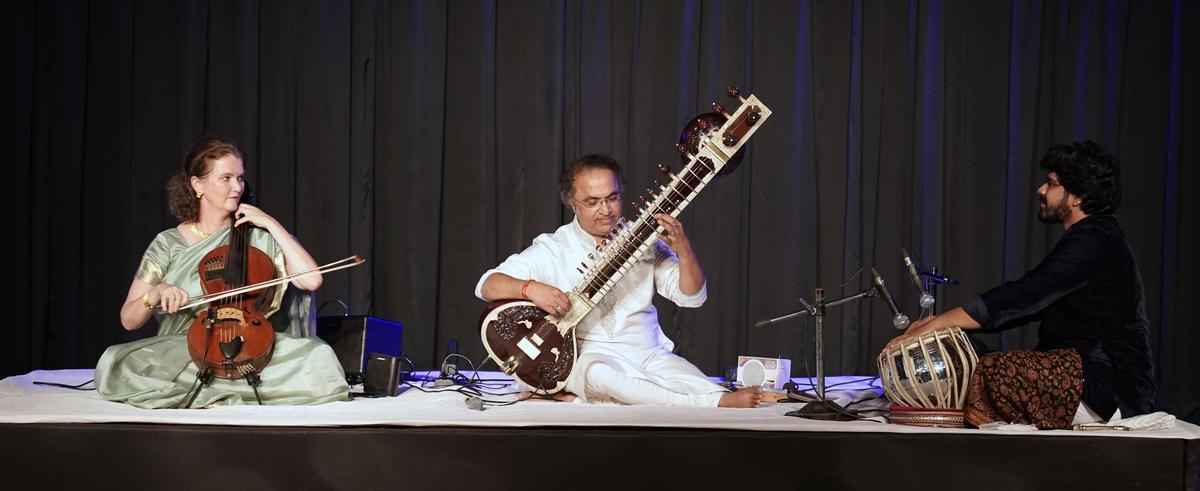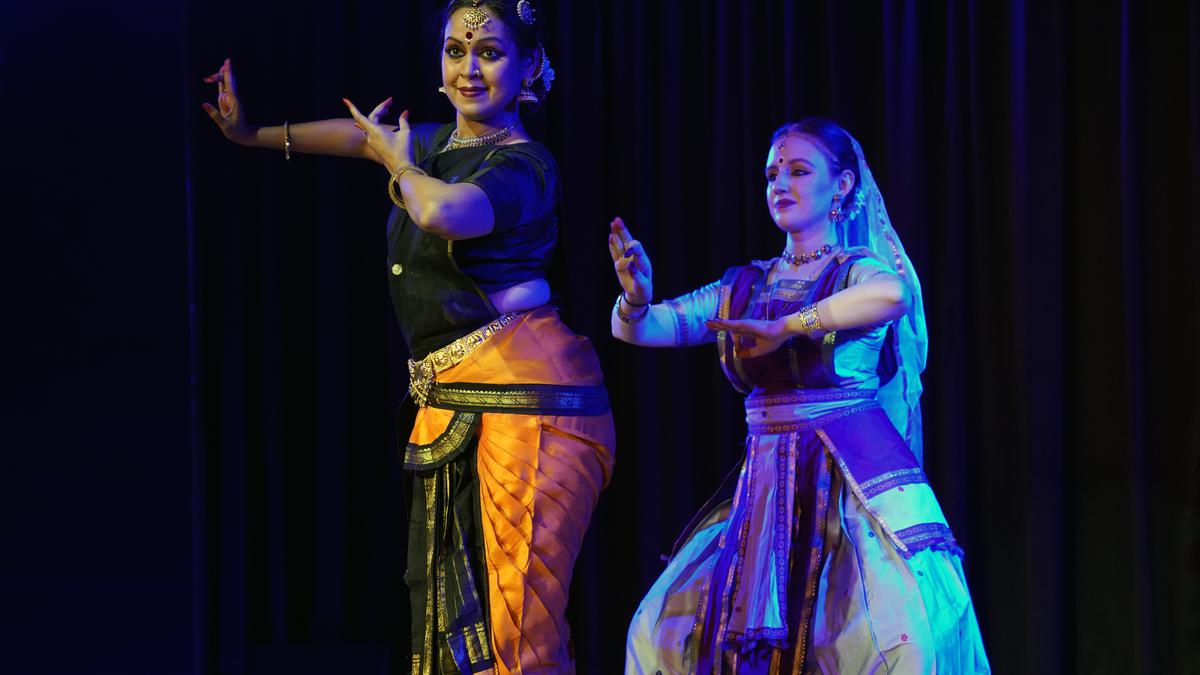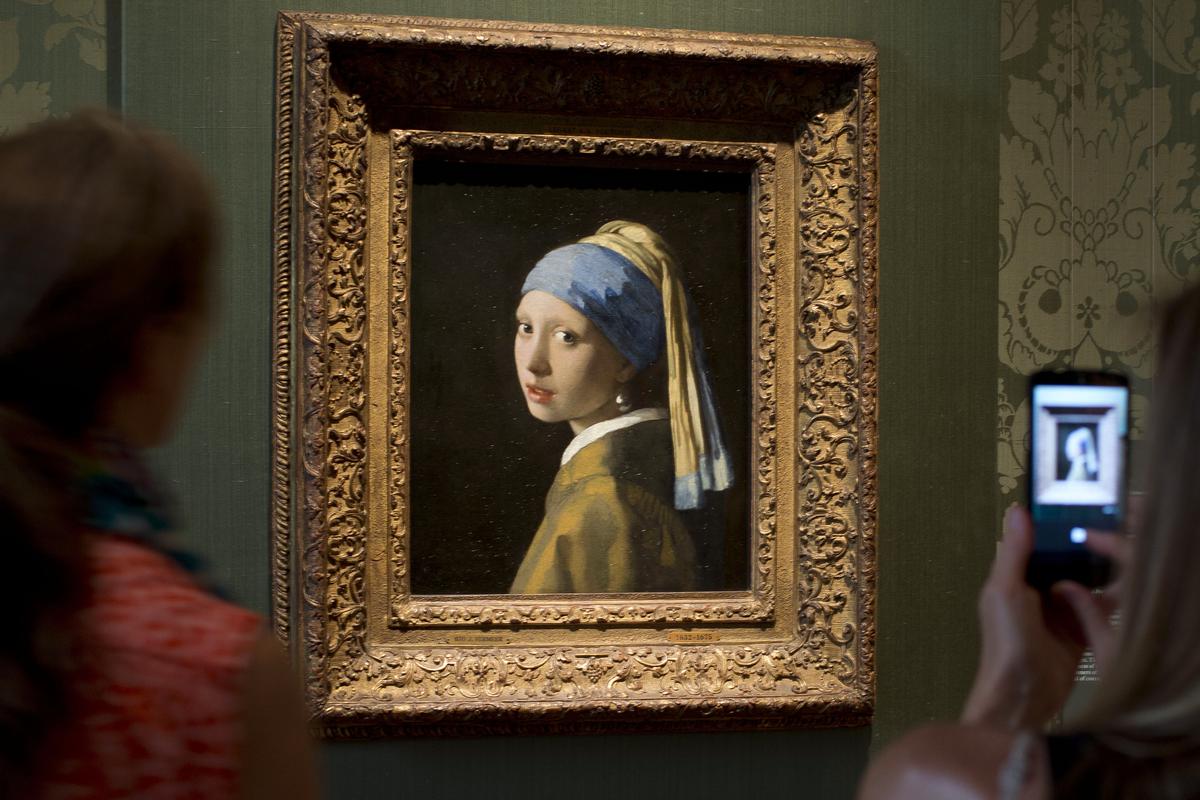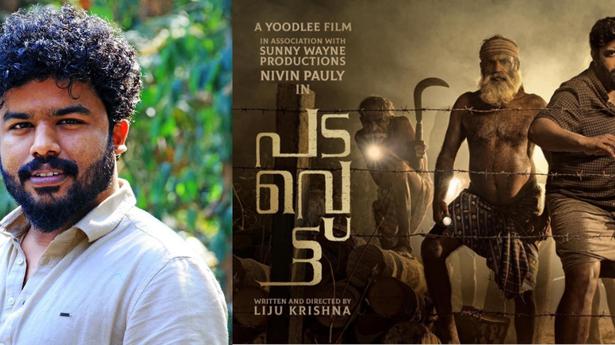The fine arts, especially music, unites people and touches the mind, heart, and soul of audiences, irrespective of gender, nationality, and their level of discernment. Two musical events held at the National Gallery of Modern Art (NGMA) and the Indian Council of Cultural Relations (ICCR) auditorium in New Delhi only proved this right.
Painting and music came together when Marten van den Berg, Ambassador of the Netherlands, and Adwait Garnayak, director-general NGMA, presented ‘Song of Water: See the Music, Hear the Painting’, composed by the Indo-Dutch musician couple Sitarist Shubhendra Rao and Cellist Saskia de Haas, at the NGMA. Both are thinking musicians who have taken their instruments beyond conventional boundaries, and forged musical bridges across cultures.
As composers, they have always been inspired by Nature. In ‘Song of Water’, Shubhendra and Saskia took as theme water, and explored its meaning in India and the Netherlands through the lens of artworks connected to the soul of the two countries — the river Ganga in India and the sea in the Netherlands. ‘Song of Water’ interpreted artworks of great masters from both countries through Indian classical ragas, polyphonic settings and Indian rhythms.
Bharatanatyam and Sattriya dance duet by Arupa Lahiri from India and Perrine Legoullon from Europe.
| Photo Credit:
Special arrangement
Presented on an open-air stage at the NGMA, ‘Song of Water’ showcased the paintings as the backdrop for Shubhendra and Saskia, who were joined by Pranshu Chaturlal on the percussion — they simultaneously interpreted the paintings through music. The musical presentation had six movements, for the six paintings from both countries, each conveying a different theme that connected the music with the painting it represented. The audience could literally hear the music in the painting and see the painting in the music.
The first movement ‘Birth’ had the display of ‘Ganga Avataran’ by Nandlal Bose. The eGanga agrees to descend on earth, but fearing an apocalyptic deluge, Bhagiratha prays to Shiva in his divine manifestation of Trikaleshwara;, so that Ganga cascades over Shiva’s matted hair and flows gently down his feet.
‘Descent of Ganga’ an oleograph by Raja Ravi Varma, also inspired the first movement based on Bairagi Todi, a reposeful raag created by the legendary Pt. Ravi Shankar, Shubhendra Rao’s guru. Opening with the primordial ‘Aum’, emanating from the elongated Meend on Cello from Mandra Pancham to Shadja, the sitar joined with the three Vedic notes, building up a rhythmic pattern for the tabla. Both the instruments explored the five notes of Bairagi Todi, evoking the ‘birth’ of the Ganga. The musical interplay of melody and rhythm captured Shiva’s Jata-Joot (mane) and the Ganga flowing to the earth in a faster rendition of Jhala.
The second movement ‘Aqua Ostinato’ interpreted ‘Pier en Zee (Pier and Sea) by Piet Mondrian, one of the most influential Dutch painters. The painting depicted the beauty of the sea flowing through the pier, evoking the hypnotic cadences of water rippling and dispersing along the wooden beams at the shorelines. This echoed the musical concept of Ostinato, a repetitive rhythmic and melodic pattern in music. Here, the composers created a refrain of six musical patterns, just like how Mondrian depicts the waves in his painting. Composed for sitar, Indian Cello, and Tabla-Tarang, where a number of tablas are tuned to the melodic patterns of the recurring notes set to a 10 beats’ time cycle, ‘Aqua Ostinato’ was also an ode to the Dutch composer Simeon ten Holt, and his stunning Canto Ostinato.
The next four movements of the musical composition were love, celebration, shoonya (stillness) and fury, interpreting the painting ‘Children of the Sea’ by Jan Toorop, the ‘Santhal Women and Mother and Child’ by Jamini Roy, ‘Bild no 33’ by Jacoba van Heemskerck, ‘Boat’ by Amrita Shergil, ‘The Sea’ by Jan Toorop and Gaganendra Nath Tagore, and ‘Lighthouse in Surf’ by Handrik Willem Mesdag.
Nandlal Bose’s creation of depth and mystery in watercolour had matching musical scores to go with the content of the paintings. The lively compering with the introductory remarks about each painting by Aroon Das enabled the audience to understand both the paintings and the complimentary musical score.
India-EU ties through music and dance
‘Samvad: a Dialogue’, conceptualised and curated by Saskia and Shubhendra, celebrated Indian and Western cultures. Art and culture and people-to-people ties are the bedrock of any vibrant bilateral relationship. The European Union-India partnership of six decades symbolised the exchange of knowledge that has created a constant dialogue between India and the EU.
‘Samvad – a Dialogue’ was also conceptualised and curated by Saskia de Haas and Shubhendra.
‘Samvad’ was organised by the Delegation of the EU to India to mark 60 years of EU – India diplomatic relations at the Azad Bhavan auditorium of the Indian Council for Cultural Affairs (ICCR).
Inaugurating the concert, Seppo Nurmi, Charge de Affaires of EU to India, said “Music and dance are powerful art expressions that enhance understanding, respect and love for different cultures and ‘Samvad – a Dialogue’ celebrates the inter-cultural exchange between EU and India.”

Shubhendra and Saskia, who were accompanied on the tabla by Zuheb Ahmed at the “Samvad – The Dialogue’.
| Photo Credit:
Special Arrangement
This came across convincingly through the music and dance duets that followed. The Jugalbandi between Shubhendra and Saskia, who were accompanied on the tabla by Zuheb Ahmed was followed by a Bharatanatyam and Sattriya dance duet by Arupa Lahiri from India and Perrine Legoullon from Europe.
Shubhendra and Saskia regaled the audience with some popular songs from both cultures, with a reasonable balance between melodic and rhythmic elements. Opening with the invocatory sound of ‘Aum’, they proceeded with a couple of songs from Italy and Bengal that complemented each other. The Adagio by a Spanish composer on the Cello was matched by Shubhendra with a Nat-Bhairavi. Folk tunes from Greece sounded close to Basant Mukhari on the Sitar. Zuheb’s Chaanchar Theka on just the Dugga (the left-hand drum), added novelty. The concluding piece was an Irish tune similar to Manjh-Khamaj that led them to “Vaishnav Jan Toh…”, the favourite bhajan of Mahatma Gandhi, before the trio concluded with a jet-speed Jhala climaxing with a Gopuchchh Tihai.
The captivating dance duet by Arupa and Perrine comprised Krishna-Vandana followed by a Tillana and the concluding Dashavatara Shloka from Geet-Govinda. Gifted with a pleasing stage presence, an erect stance and admirable agility, the light-footed Arupa Lahiri complemented the soft dancing grace of Perrine.





